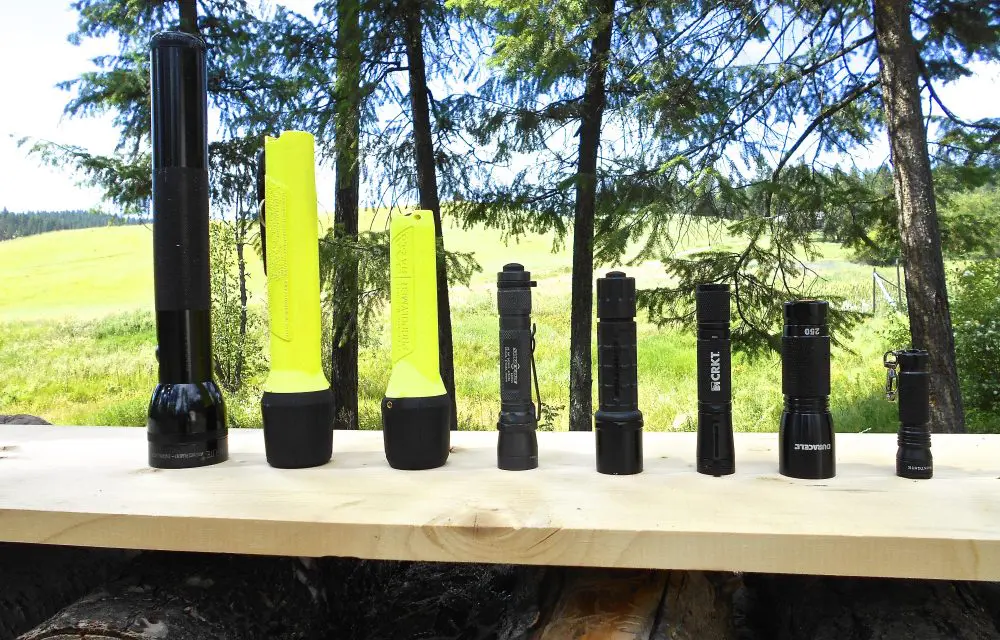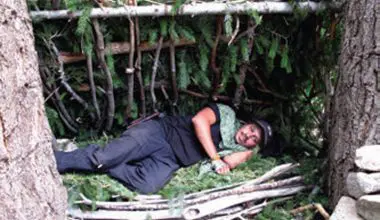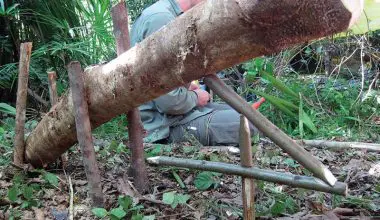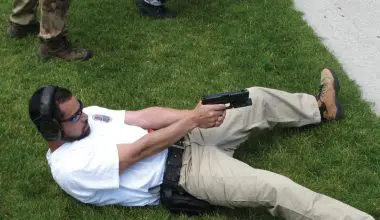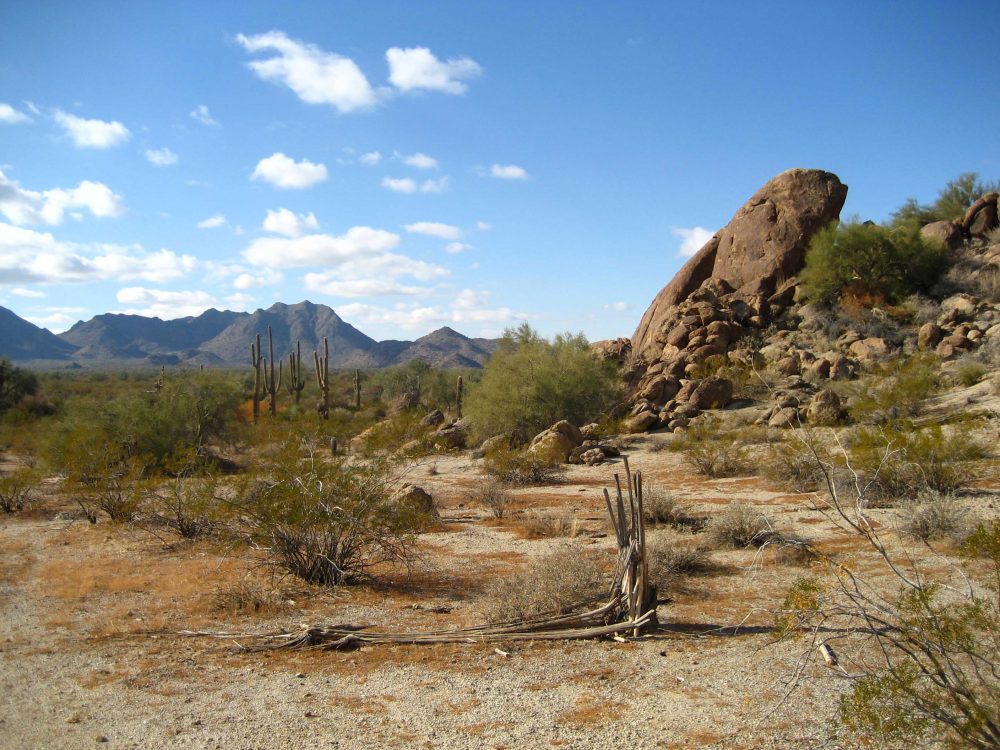Having the right gear with you is important, but in order to select the right gear, it’s important to know what the survival priorities are.
The late, great Ron Hood is regarded as the “Godfather of Survival.” One of the things he taught was the Rule of Threes: A person can survive about three minutes without air, three hours without shelter, three days without water, and roughly three weeks without food.
Based on these teachings, here are ten items that will increase your chances of survival in a wilderness or urban survival scenario.
The items can all be carried in a regular- size backpack or stored on one’s body through various pockets in a vest or cargo pants.
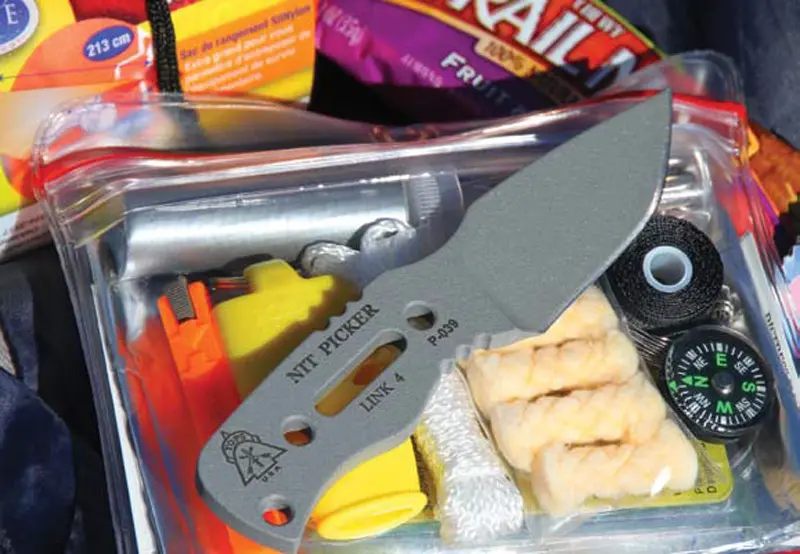
Table of Contents
WATER FILTERS AND PURIFYING TABLETS
Finding water is only half the battle, as from then on it will need to be filtered and disinfected. Many commercial items are designed for this task. Water filters and purifying tablets are the most common ways to treat water. Make sure your filter takes care of cryptosporidium and giardia, two of the most common parasites.
SURVIVAL KNIFE
The knife is considered man’s oldest tool. Before space-age steels, knives were crudely fashioned out of rock, bone or flint. It wasn’t until the art of metallurgy progressed thousands of years later that knives were made from various metals. Early examples include copper, bronze and iron knives.
Today’s knives are generally made from steel, be it stainless or carbon. The uses for a cutting tool are almost unlimited— the knife is considered by many the single most important tool to have in a survival scenario. This tool can be used for shelter building, fire preparation, skinning, defense, hunting, trapping and much more. A knife is the one tool that makes almost all other aspects of survival possible.
FIRE STARTER
The ability to make fire is crucial in a survival situation. Simply get a waterproof box and pack it with a couple of lighters, some weatherproof matches, a flint and steel or magnesium fire starter.
A fire provides warmth in the cold, heat to cook food and purify water, a means to ward off animals, and a potential rescue signal. A fire is also good for helping you to keep a positive mental outlook. Even if you’re just a car camper, pack a fire kit and practice starting fires without using your lighter and Duraflame fire log.
COMPASS
Having a general idea of where you as a motorist or hiker are headed in the first place plays into your ability to get out of an area. If you have a compass on hand and know how to use it, you can use a map of the area to get back to civilization. If you don’t have a map, the compass will still get you going in the right direction.
Some compasses have a built-in magnifying glass intended for zeroing in on map details. This magnifying glass is also useful for starting a fire and magnifying insect stingers and tick heads for extraction.
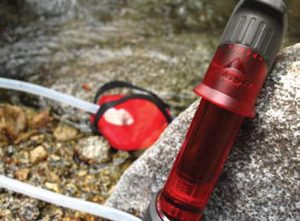
FIRST-AID KIT
When selecting or making your own first-aid kit, make sure to carry the essentials, including antibiotic ointment for cleaning wounds, alcohol swabs, pain reliever, aspirin, and antihistamine. Throw in some tweezers, gauze, bandages, and duct tape. Having these on hand will do little good unless you know how to use them, so practice beforehand and throw in a pocket first-aid guide to help you out.
MIRROR
No survivalist’s kit should be without a signaling mirror. Signaling by reflection will travel farther than the sound of a whistle. A small two- by three-inch mirror flash can be seen during the day from about 100 miles away.
Some mirrors are specially suited for signaling rescue and include sighting holes that allow you to more accurately aim the reflection. The better ones are typically made of something besides breakable glass. In a life-or-death situation, any kind of mirror will do.
ROPE
550 parachute cord, which gets its name from its 550-pound test strength, is ideal because it has inner strands that can be removed and used for a plethora of survival tasks.
These inner strands can be used to make fishing line, snares and traps, as well as lashing gear or shelter poles together. This type of cordage is woven from seven strands of white nylon that can also be unraveled and used as heavy thread or string, making it an ideal multipurpose survival tool.
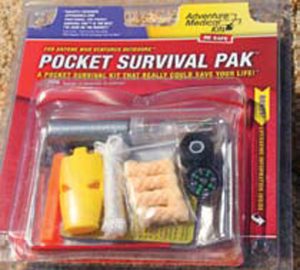
550 cord is too slender to be used as climbing rope, but you can include some non-stretch nylon rope in your survival kit. Knowledge of basic knots is a valuable skill to have when carrying rope and cordage.
SURVIVAL BLANKET
There are two types of survival blankets: emergency space and all weather.
Emergency Space Blankets are made of Mylar and have that crinkly feel to them. They are compact, very lightweight (about 2 ounces) and can easily fit in a pocket or small backpack. They reflect up to 90% of your body heat back to you and create a wind- and waterproof barrier that help a person defend against the elements.
The second type is called an All Weather Survival Blanket. This is more of a tarp than a blanket, with four grommets, one at each corner, perfect for stakes or attaching to cord. It has more uses than the Emergency Space Blanket. Used in conjunction with two long poles, the All
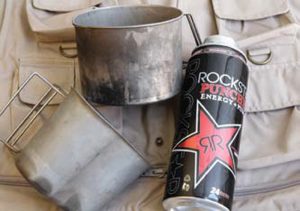
Weather Blanket can be set up like a tarp for overhead protection against rain, falling debris, and snow.
CONTAINER
The ability to collect things is often overlooked. Having a container for collecting dry pine needles, fatwood, old man’s beard, tinder or kindling—and using the container to hold water—is a very important advantage in a survival situation, especially if it is a metal container. Having a way to gather, dig, cook, hold, and boil water puts a survivor in a much better position.
CELL PHONE
Yes, a cell phone. There aren’t many people today who don’t own a cell phone. Some cell phones have a GPS built into them. Besides the obvious, a cell phone may act as a light that can be used to rummage through a pack or light the way when nature calls. In addition, the battery can be used with steel wool (if available) to create an ember and ultimately fire.
Survival scenarios aren’t limited to the wilderness. In day-to-day life, many things can go wrong and become survival situations, such as traffic accidents, a home fire and the all-too-common lost or stranded motorist. A cell phone is a must in these scenarios.
Besides, no other tool listed can get you rescued and allow you to order a pizza at the same time!
